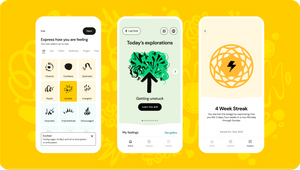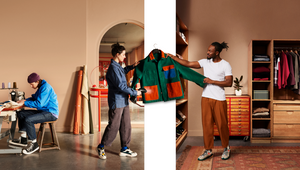
Designing the Next Interface: AI, Emotion and the New Creative Order

Design has entered a new phase, one where systems behave, learn and build relationships. Screens are still in the frame but they no longer define the experience.
The real work now is in how experiences show up, how they adapt in real time and how they earn trust, not just attention.
That shift demands a new approach, a new kind of team and a complete reset of how we define value in design.
At Code and Theory, we’ve rebuilt how we work. Instead of designing fixed assets, we build systems with presence and structures that can think, respond and evolve. That requires cross-disciplinary teams, responsive tools and creative systems that can flex without breaking.
We start early—before deliverables, before structure. We begin with intent maps, frameworks that define what an experience should feel like, what it should remember and how it should behave over time. These maps guide not just the UX but the entire system’s tone, logic and emotional posture.
Designers collaborate with engineers to shape emotional APIs, codified expressions of a brand’s personality that can shift across platforms without losing coherence. Strategy plugs directly into experience design, not as a handoff but a continuous exchange.
We aren’t just segmenting audiences. We’re detecting states, adjusting in real time and designing for responsiveness.
We build composable experience frameworks that adapt to behavior, context and the moment. These systems aren’t rigid or generic; they’re fluid and expressive. Built to move. Built to scale. Built to feel.
Applying this approach to our work with YETI, we’ve transformed their platform from a product destination into a planning tool that helps people map out seasonal adventures based on location, time and intent. Commerce becomes a byproduct of story. The interface becomes part of the planning ritual, something people return to again and again as they plan their next adventure.
With Microsoft, we explored how AI could quietly guide a user journey, responding in real time without needing to explain its logic.
The experience becomes the proof: quietly intelligent, intuitive, always one step ahead.
And with Amazon Ads, we built a message that understood marketers at a human level. The work doesn’t lead with functionality. It leads with emotional truth, what keeps people up at night and what they need to hear to move forward.
These aren’t just projects. They’re signals—markers of how the practice of design is changing.
We don’t work in traditional departments. We build team pods around problems. Designers lead behaviour. Strategists shape tone. Engineers model responsiveness. Everyone shapes how the system feels and performs.
Design today is about timing, context and restraint. How something responds when no one is watching matters just as much as how it performs under pressure, like a system that offers support before it’s asked, or a recommendation engine that adapts without being prompted. The quiet moments are where trust is built.
That requires care. And it requires clarity: early, deep and shared across disciplines.
That clarity is the beating heart of how we work. With structure. With tools. With systems that are alive.
This is where the industry is heading. Toward experiences that adapt and learn. Toward brands that feel less like statements and more like presences. Toward systems that understand what people need even before they ask.
The interface is everywhere, built not just to be seen, but to be felt.















